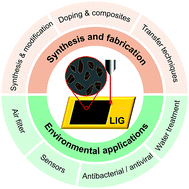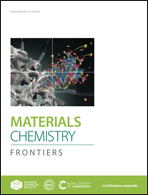Laser-induced graphene for environmental applications: progress and opportunities
Abstract
The successful exfoliation of few-layer graphene from monolith graphite in 2004 has stimulated an exponential growth in graphene research. Ten years later, a facile and cost-effective method was discovered to synthesize high-quality graphene by directly scribing commercially available polymer using a CO2 laser under ambient conditions. The product, denoted as laser-induced graphene (LIG), featured high porosity, excellent electron conductivity, intrinsic photothermal effects and tunable surface properties. Since the discovery, LIG has attracted intense attention from both academia and industry and found broad applications in areas such as energy conversion and storage, sensors, antibacterials and desalination. In this review, we focus on the recent advances of LIG in environmental applications. We start with the development of synthetic techniques, including the precise engineering of LIG properties and the transfer strategies towards functional LIG composites. The achievement in synthesis enables the environmental applications of LIG in a broad context. Finally, the challenges and opportunities in solving different environmental issues using LIG are discussed.

- This article is part of the themed collection: 2021 Materials Chemistry Frontiers Review-type Articles


 Please wait while we load your content...
Please wait while we load your content...